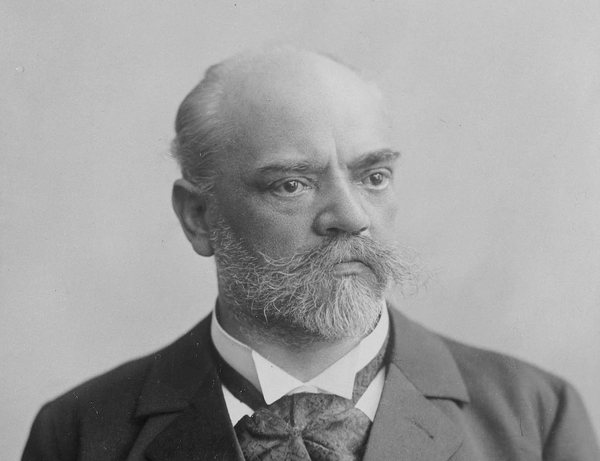The Bridgetower Sonata

Any violin student beyond a certain level will have heard of Kreutzer. His 42 etudes or caprices (42 études ou caprices) are almost a rite of passage, a core part of the teaching repertoire ever since their publication around 1796. I have my much-used copy from my student days, and just before last year’s lockdown gave our more advanced Child’s Play violin students theirs. I still return to Étude 2 with its varied bowings.
French violinist-composer, conductor and pedagogue Rodolphe Kreutzer (1766-1831) composed prolifically, with 14 violin concertos and 40 operas among other works. But it is for the etudes that he is remembered today.
Rather unfairly, he is also remembered for the ‘Kreutzer’ sonata (no 9 opus 47 in A major) by Beethoven, dedicated to Kreutzer but which the violinist, not a fan of Beethoven’s music, actually spurned, calling it «outrageously unintelligible» and never playing it. It must count as one of the oddest dedications in music history.
Many of you will recall the eloquent account of this work in Panaji in 2012 by Israeli violinist Hadar Rimon (Natasha Tadson, piano). It’s still up there with some of the most memorable violin-piano concerts I’ve heard in Goa.
Why did Beethoven dedicate a work to Kretuzer who thought so little of it? What is not so well-known is that Beethoven had originally dedicated it to another violinist who has faded into oblivion but is now getting his due.
George Augustus (also Hieronymus Hyppolitus de Augustus) Polgreen Bridgetower (1778 – 1860) was a violin virtuoso with an interesting story. He was born in Biała Podlaska, Poland to John Frederick Bridgetower, probably of West Indian descent, (most likely Barbados, with the name Bridgetower derived from the island’s capital, Bridgetown); and Maria Anna Ursula Schimdt from Germany. Both are thought to have been servants to nobility, although the father claimed to be an African prince (as stated on George’s baptismal record).
The year after George’s birth, his father found himself employed as servant to the Hungarian Prince Nicolas Esterházy, the patron of Austrian composer Joseph Haydn (1732-1809) in Eisenstadt and Esterháza. Growing up in the music-loving Prince’s household must have had a strong influence on George’s development as a musician.
It is remarkable that the musical potential of a servants’ child, and a mixed-race one at that, was spotted at all, and so early. It is now certain that Haydn himself tutored Bridgetower in his early years. I had used the example of George Bridgetower at my presentation at Carnegie Hall, New York in 2012 for Child’s Play, to make the point that musical potential can be found in the most serendipitous places if children are only given the opportunity and encouragement.
The Bridgetowers moved to London soon after. By the age of ten, the young prodigy was established as a professional violinist and was performing with the Royal Philharmonic Society Orchestra at Drury Lane Theatre.
He took up composing and teaching, and later attended Trinity Hall, Cambridge where he earned a Bachelor of Music degree. In 1789, his concerts took him to Paris, London, Bristol and Bath.
After his Paris concert, French journal ‘Le Mercure de France’ wrote: “His talent is one of the best replies one can give to philosophers who wish to deprive people of his nation and colour of the opportunity to distinguish themselves in the arts.”
His father arranged for him to play before the music-loving monarchs, King George III and Queen Charlotte. Bridgetower also caught the attention of the Prince Regent, (the future King George IV) who oversaw his further music education (studying with the likes of Thomas Attwood and Giovanni Battista Viottit) and effectively became his guardian after his father went astray.
In 1802, Bridgetower was given leave to visit his mother and his brother (a cellist, Friedrich Joseph Bridgetower) in Dresden, where the brothers performed together. The following year, he visited Vienna at the invitation of Prince Lobkowitz, Beethoven’s patron, to play Beethoven’s string quartets.
The two musicians bonded instantly. They had much in common: they were less than a decade apart in age; both had abusive fathers who tried to exploit their prodigious musical ability.
It must be remembered that this encounter took place just a few months after Beethoven had seriously contemplated suicide and wrote his Heiligenstadt Testament documenting his despair over inexorably worsening deafness. But now he seemed to have found ‘joie de vivre’ again. The two stayed up nights, drinking and merry-making.
Beethoven was so impressed by Bridgetower’s violin virtuosity that he dedicated this violin sonata to him, with this lighthearted inscription: “Sonata mulattica composta per il mulatto Brischdauer, gran pazzo e compositore mulattico” (“Mulatto sonata composed for the mulatto Bridgetower, great lunatic and mulatto composer”). Beethoven himself was nicknamed “the Spaniard” due to his own swarthy complexion and theories still abound on his ‘African’ blood, so the term “mulaticco” should be interpreted in this
context.
The work was written in a fit of creative frenzy. Its first public performance was given by dedicatee and composer at Vienna’s Augarten on the morning of May 24, 1803. But at 4:30 a.m. that morning, Beethoven’s pupil Ferdinand Ries was still copying out the parts. He managed just the first two movements of the violin part, and just sketched out the piano part. Bridgetower had to virtually sight-read most of the music, looking over Beethoven’s shoulder at the hastily scribbled score. Beethoven played his part from memory.
At one point, Bridgetower amended or made an embellishment to the violin part, which so surprised and pleased Beethoven that he leapt up from his bench, saying: “Noch einmal, mein lieber Bursch!” (“Once more, my dear fellow!”).
Beethoven gave Bridgetower a tuning fork as a friendship token. But at some point, perhaps that evening over celebratory drinks in a tavern, Beethoven took offence over a remark Bridgetower allegedly made about “a girl” who Beethoven was happened to be fond of. Beethoven, enraged, withdrew the dedication and terminated the friendship. Instead the sonata was dedicated to Kreutzer, probably a calculated move by Beethoven who had planned to move to Paris (but never did).
Bridgetower returned to England, became a family man, and continued composing, teaching and performing. Two of his compositions survive, and one hopes that at least one violin concerto (composed around 1805 and that he performed often) may someday resurface. He is buried in Kensal Green cemetery.
The Kreutzer sonata has been immortalised as a novella (1889) by Leo Tolstoy and the novella in turn has inspired art, theatre and film. But Bridgetower has been largely forgotten.
In 2009, US poet-laureate Rita Dove wrote a collection of poems ‘Sonata Mulattica: A Life in Five Movements and a Short Play’ about Bridgetower and the Beethoven sonata.
By April this year, over 15,000 people signed a petition for a plaque to be installed in the Assembly Rooms in Bath, where Bridgetower is known to have played.
Dove’s book is the basis for a film ‘Sonata Mulattica’ juxtaposing the lives of Bridgetower and of contemporary black musician Joshua Coyne (1993-) exploring racial prejudice from Bridgetower’s time to ours, and raises uncomfortable questions over how much (or little) attitudes have improved since then.
This article first appeared in The Navhind Times, Goa, India.





